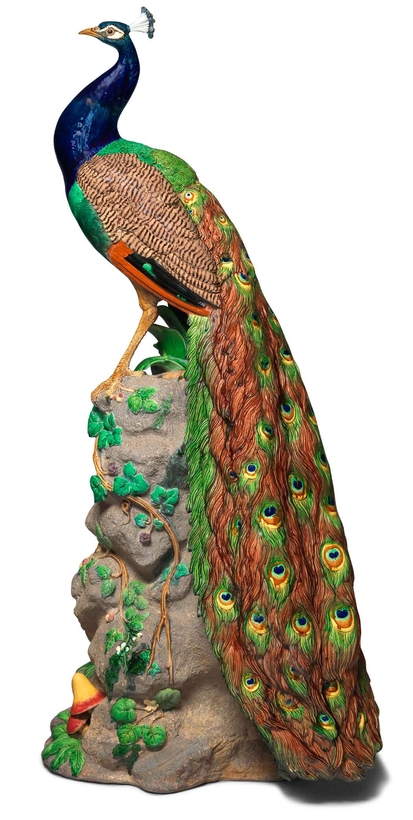What is it about majolica that ravishes the eye and inflames the imagination? The riotous forms? The supersaturated lollipop colors? The syrupy glazes that look ready for a lick? The exhibition “Majolica Mania: Transatlantic Pottery in England and the United States, 1850–1915,” on now at the Bard Graduate Center, addresses these questions with roughly 350 works pulled from collections in America and across the pond. Organized by the center’s founder and director, Susan Weber, and associate curator Jo Briggs, the show places these giddy, gaudy pieces in their historical and cultural contexts.
Hawked as suitable for a cottage or a castle, the millions as well as the millionaire, majolica, Weber and Julia Marciari-Alexander write in the exhibition catalogue, is “arguably the most important ceramic innovation of the nineteenth century. The story of majolica’s rise and fall encompasses not only art and design, but also industrial production, chemical invention, and an array of interests, enthusiasms, and preoccupations of the Victorian period: from the art of the Italian and French Renaissance to zoology, botany, and Darwin’s theory of evolution.”

The taste for majolica also reflects “ever more complicated standards of decorum and social norms,” according to Weber and Marciari-Alexander. A proliferation of magazines, domestic guides, and cookbooks all created a new demand for specialty wares, such as dessert sets, sardine boxes, and game-pie dishes as well as for oyster and asparagus plates. This demand was sustained by the expansion of the railways and a vibrant print culture consisting of advertisements and price lists.

The name is derived from the Italian maiolica—the word for tin-glazed Italian earthenware ceramics produced in workshops from the Renaissance to the 1700s. In the 1800s, the word “majolica” was commonly used and then adopted by the venerable Minton & Co. when it debuted its new factory-produced earthenware at the Great Exhibition of 1851. Made of porous, low-fired clay—easy to mold and shape—and embellished with vividly colored lead-based glazes, majolica’s range spanned the practical to the fanciful.
Over the next 60 years, it became an international phenomenon, churned out by factories across Britain, Europe, and the United States. Aficionados and newcomers alike swooned over the many genres (and genus species!) of majolica. Think of a pitcher whose handle is formed by the neck of a swan. Or a hyper-real ornamental peacock (roughly five feet high and likely to land in the conservatory of those well-heeled enough to purchase it), its magnificent tail ready to burst into quivering display. Or ears of corn, clusters of grapes, elephants, fish, birds—a teeming world of flora and fauna.
But as with every precipitous rise, there is an equally dramatic fall. Majolica came to be seen as garish, over-decorated, and cheap. Its luster dimmed, a bright star extinguished. More than a century passed before it would be re-assessed and recognized as one of the most inventive, artful, and dazzling ceramic expressions of the 19th century. High time. —Yona Zeldis McDonough
“Majolica Mania” is on at the Bard Graduate Center, in New York City, through January 2

 Discover
Discover